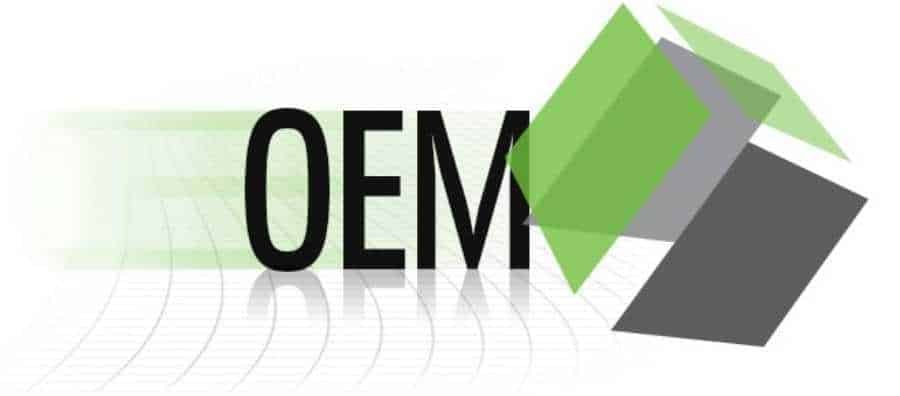If you are new to technology, have electronic components or software, you have probably come across the acronym OEM. The name comes from Original Equipment Manufacturer (manufacturer of the original equipment) and is usually on a label affixed to the hardware or software you purchased. 
Usually an OEM product is much cheaper than regular retail products.
Below we will try to answer a few questions: Is it worth buying an OEM product, or is there something you need to know behind the cheapest price? They differ from retail products and what you need to know about the differences.
What does OEM mean?
As mentioned above, the name with the initials OEM comes from the Original Equipment Manufacturer (manufacturer of the original equipment). The acronym does not indicate who sells the product, but rather to whom it is intended to be sold.
OEM hardware and software are available for distribution to systems manufacturers such as Dell, HP and Apple. These companies are the original equipment manufacturers.
This is why OEM products are usually sold pre-installed instead of in a retail package. So something very special about OEMs is that they are not designed to be on store shelves.
And usually it is not. Most retailers never sell OEM products. However, online stores that do not have shelves and are not interested in retail packaging, have OEM products for their customers.
Yes there are online shops that know that there are many who are looking for cheaper prices and so have OEM products. But do not worry, because it is legal to buy an OEM product. However, there are some terms (terms) that are attached to the product and which you accept with its purchase.
Differences
OEM hardware is exactly the same in features and performance as the products you find in retail. Hard disks, optical drives and some PCI expansion cards are some of the most common types of components offered as OEMs. There are of course many other products offered in this way but in limited numbers.
However, the hardware usually doesn't come with a few extras data, even if they are critical to the correct operation of the component. OEM processors for example may not have fans. An OEM graphics card or hard drive may not have the cables or adapters needed to connect to the host system.
There may also be warranty restrictions. Compared to the guarantee offered by the retail, OEMs products may have a shorter warranty or not at all. This is because the warranty is usually provided by the manufacturer throughout the system and not just on one hard drive (for example).
It should be noted that buying an OEM product makes you one with the manufacturer, so you will not be entitled to support.
OEM software
You know that buying one permissionof using Windows 10 increases the cost of building your staff computer.
Windows is the most common example of an OEM that is often avoided by those who build their own systems, but there are also OEM versions for security applications, their system utilities, and productivity software such as Office.
When you buy OEM software, you usually only get the software and a license. Do not wait to get instructions for use, and you should know that most OEM licensed software is available without tech support.
OEM software usually comes with a license per system, which means you can not install it on another computer.
Theoretically, this means that an OEM version of Windows is connected to the first installer, although Microsoft is not so strict about it.
Restarting Windows can usually be done very easily by contacting your customer service department.
Although Microsoft is very flexible in this, because it is more interested in installing Windows on another system, other companies are much more restrictive. This is also a risk of OEM products. They cost less, but you will need to buy them again if you replace your computer or upgrade it. motherboard.
Is OEM worth it?
Buying OEM products is completely safe and legal, but you should be aware of the risks.
You can usually save a lot of money with OEM products, but if you run into a problem there will be no support. So it would be good for those who know some technical issues to buy OEM products. For novice users the retail version of the same product is probably the best choice.
The amount of discount you will usually have varies depending on the product and the seller. For example, OEM antivirus software is usually 25% to 50% cheaper. Some software utilities enjoy similar discounts.
The main problem in the OEM software market is availability, as most developers only offer regular versions of the product they are developing.
Hardware now, is more of an opportunity, but with some conditions, You can make a lot of money by buying OEM hardware, and be very happy with their performance. However, you may find that buying additional hardware components, such as cables and fans, also costs money. You can decide to buy OEM hardware and win if you have the extra components needed to connect it.
Sometimes, OEM hardware can be more expensive than the products available in retail. This usually happens when it stops supporting.
So before you start buying hardware, or even software, do a quick price comparison.
_______________________
- Rowhammer an incredible assault for a few
- Cortana true do you use the digital assistant?
- MOST Liquid solar energy everywhere
- What is a gaming router? Is it worth buying?






I have bought a remote controlled boat and I want to ask you if a wireless depth sounder can be fitted to it
https://www.facebook.com/groups/igurugr
I have bought the H96 max rk3318 smartbox and I have connected it to a samsung UE32ES5500 tv. It has successfully connected to the home wifi but at the point where Google asks me for my email it does not respond. What can happen?
for technical support at https://www.facebook.com/groups/iguru.gr/